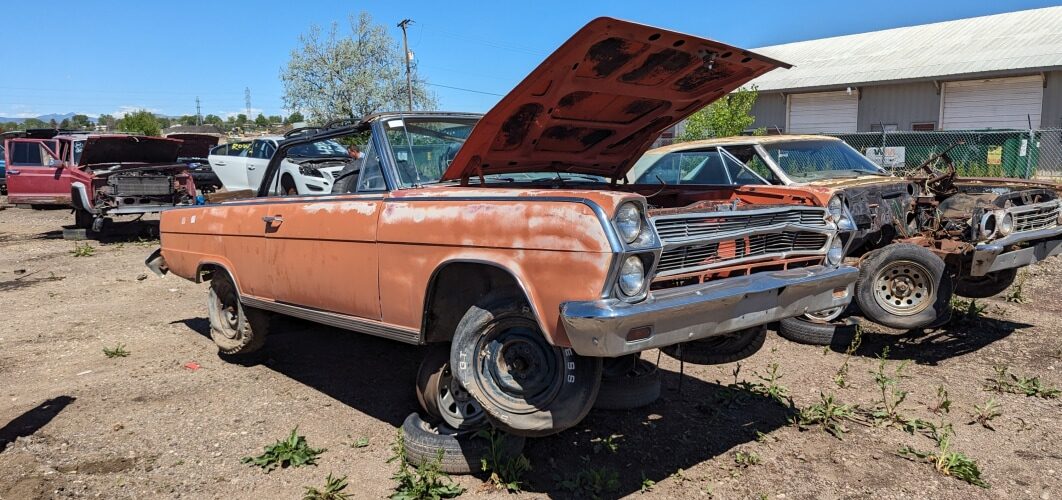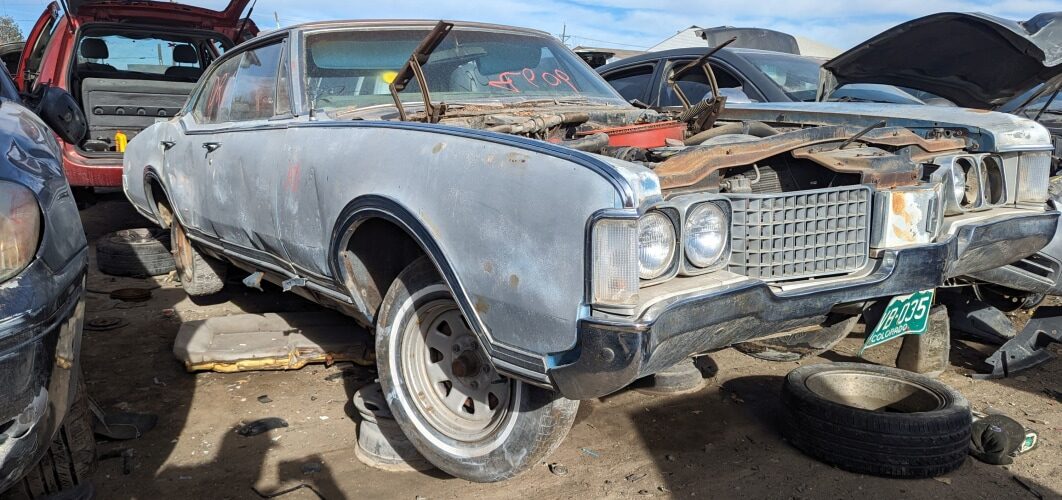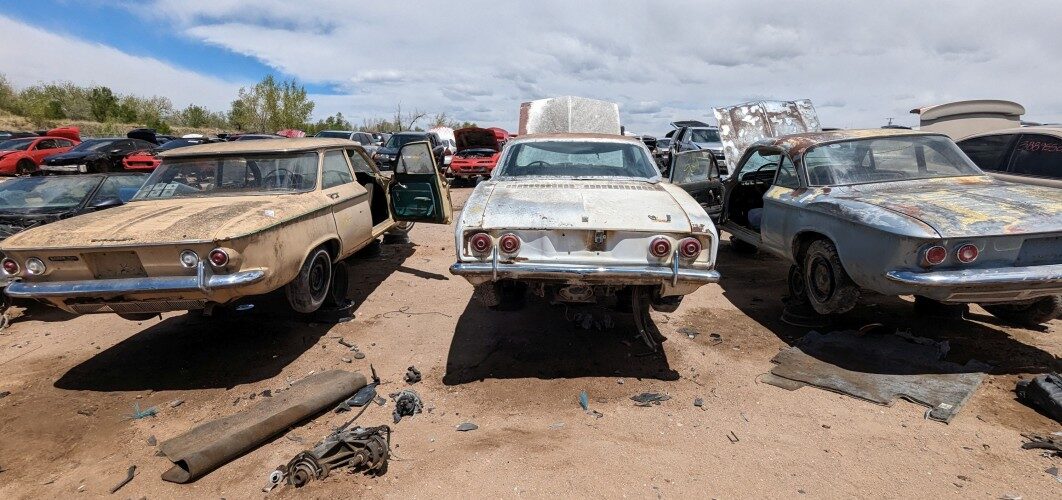By the middle 1960s, George Romney had left the helm of American Motors to become governor of Michigan and company president Roy Abernethy had decided that AMC needed to compete more directly against GM, Ford and Chrysler. In order for the Kenosha manufacturer formed from the 1954 merger of Nash and Hudson to do that, a genuine full-size car had to be created to steal sales from the Impala, Galaxie and Monaco. With a wheelbase stretch and a restyling by Dick Teague, the Rambler Ambassador became that car for the 1965 model year. Here’s a once-snazzy soft-top Ambassador from that year, found at a family-owned yard just south of the Denver city limits.
I’ve documented quite a few vintage machines at Colorado Auto & Parts in this series over the past year, including a 1954 Plymouth Belvedere, a 1969 Walker Power Truck, a 1974 Ford F-250, a 1960 Triumph TR3A, a 1947 Dodge Custom Club Coupe, a 1969 AMC Rambler 440, a 1951 Studebaker Champion, a 1959 Princess DM4 limousine and a couple of dozen first-generation Mustangs and Cougars. This Ambassador is now parked between a Chevelle and a Mustang.

The Ambassador 990 convertible wasn’t the most expensive new ’65 Rambler you could buy, because the Ambassador wagon and the sporty new Marlin cost a bit more. Still, its $2,955 price tag ($29,907 in 2024 dollars) was on the steep side for Rambler shoppers accustomed to penny-pinching Classics and Americans.
This car would have cost much more than the base MSRP, though, because it was built with AMC’s biggest car engine at the time: a 327-cubic-inch V8 rated at 250 horsepower. No, it’s not related to the Chevrolet 327 small-block; parts-counter staffers spent many decades dealing with that confusing name mixup (to be fair to AMC, their 327 was first).
Kaiser-Jeep, not yet purchased by AMC, bought AMC 327s for use in its trucks during the mid-to-late 1960s and called them 327 Vigilantes.
The base engine in the 1965 Ambassador was the 232-cubic-inch “Torque-Command” straight-six, the 4.0-liter descendants of which were still being bolted into new Jeep Wranglers in 2006.

The base transmission in the 1965 Ambassador was a three-speed column-shift manual, but this car has the optional three-speed automatic with “Flash-O-Matic” shifter on the center console. If you wanted a factory radio in your new ’65 Ambassador, you could add “Duo-Coustic” or “Vibra-Tone” rear speakers.

AMC sold just under 65,000 Ambassadors for the 1965 model year, including wagons. Meanwhile, Chevrolet sold better than a million of its full-size Biscaynes, Bel Airs and Impalas that year (and GM’s Pontiac, Oldsmobile and Buick sold plenty of their own versions of those cars as well). As for Ford and Chrysler, there’s no need to rub it in by listing their vast sales numbers for big cars that year. The Ambassador wasn’t much bigger than the competition’s midsize cars at the time, which was a factor in its slow sales.
American Motors had its ups and downs after 1965, but the general story arc was that the Detroit Big Three used their greater resources to continue grinding down their Wisconsin competitor until Chrysler finally bought what was left in 1987.

The last model year for the Rambler marque was 1968, after which all of AMC’s U.S.-market cars got American Motors Corporation badging. The Rambler name lived on for one more year, as the model name on the former Rambler American for 1969: the AMC Rambler.
This car would be worth decent money if restored, but the body is on the rusty side and the interior has been exposed to the elements for many years, making such a restoration a very costly proposition.
The “Sensible Spectaculars” advertising campaign was on the puzzling side.



























